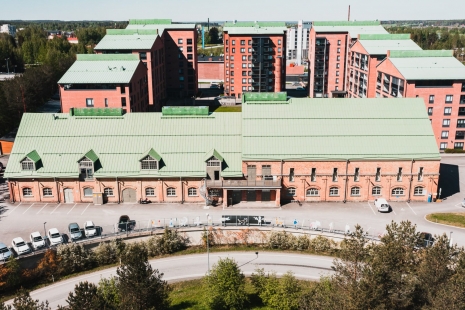Derby is a term used in sports, which most often refers to a local match and the meeting of traditionally rivalling teams. What are the underlying assumptions concerning the antagonism between sports and art? After all, they have a lot in common. Both include passion, technical skill, training, unique aesthetics, and creativity. Derby explores what these rivals give each other.
Artists:
Krister Gråhn and Hannamari Matikainen asked the team T06-08 of the Seinäjoen Maila-Jussit to explain what is essential to Finnish baseball. The personal experiences of the young players, together with the artists’ interpretations, culminate into an immersive audio and installation work.
Krister Gråhn (b.1979) is a sculptor living in Mänttä, who in recent years has mainly focused on realizing joint works with different working couples. He treats art as a natural means of communication for humans through his own personal experiences. Gråhn has an MA from the Academy of Fine Arts and is currently studying in the Praxis curatorial program.
Hannamari Matikainen (b. 1976) is an artist from Tampere. She mainly uses different graphics techniques and painting as tools. In her works, Matikainen mainly deals with the themes of humanity and empathy. Matikainen graduated as a visual artist from Tampere University of Applied Sciences.
Gråhn and Matikainen have worked together since 2008 and they have developed e.g. of a new graphics technique, silicone printing, which combines the casting techniques of sculpture with the methods of gravure graphics.
Anne Lehtelä
Anne Lehtelä got together with the athletes of the local orienteering association Rasti-Jussit and found common ground with her own interest in running. As a result, the immersive installation encourages the spectator to experience the forest like a runner and an orienteerer.
Anne Lehtelä (b. 1986) is a visual artist who lives and works in Tampere. Lehtelä works with conceptual and installation art. Her practice involves observing social structures that focus on inequality, political systems, boundaries, and change processes. An essential question behind her works is the concept of freedom. Lehtelä holds an MA and works as a regional artist at the Arts Promotion Centre Finland.
Teemu Mäki
In his documentary, Teemu Mäki ponders the different ways being a man is enacted—drawing from the RiverBulls, a synchronized skating team, and the current Russian president. A painted portrait of the team is also exhibited in the show.
Teemu Mäki (b.1967) is a writer, visual artist, theatre and film director, and researcher. In his doctoral dissertation, Mäki considered the intersections of art, philosophy, and politics. In his book of essays, Taiteen tehtävä, he discussed the role of art for both the individual and society. In recent years, he has examined, e.g. themes of gender diversity, the concentration of power and wealth, and human-caused mass extinction. Mäki is currently the chair of the Artists’ Association of Finland.
Alina Sinivaara
Alina Sinivaara paints the world of soccer on canvas. The paintings are impressions of the premises of the OmaSP Stadium and the SJK football club representative team.
Helsinki-based painter Alina Sinivaara (b. 1978) has been painting sports for a long time. She is not interested in simply illustrating sports, but the elements of playing fields— such as nets, fences, balls, goals and stadiums—often slip into the paintings. Sinivaara studied at Vapaa Taidekoulu and the University of Art and Design Helsinki (now Aalto University School of Arts, Design, and Architecture).
Maria Stereo
Maria Stereo got to know the skateboarding culture of Seinäjoki with the guidance of members of the Lakeuden WallRiver SK8boarding association. In the artwork, the imagery of skateboarding and the artist’s aesthetics combine into an altar—a tribute dedicated to skateboarding.
Maria Stereo (b. 1979) lives and works in Kangasala. She is known as an artist who uses richly decorative visuals and insightful recycled materials. Stereo’s world is full of rococo, kitsch, and surrealism. The works are strongly related to the artist’s childhood in the 80s and her image of those times. Stereo graduated as a visual artist from Tampere University of Applied Sciences.




